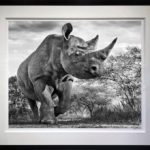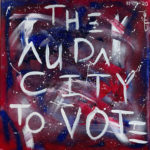I had a client recently complain to me that his painting only ascended 1% per year since he purchased it. I asked him what else in his portfolio could offer the same returns at this point, and he relented.

While artwork should never be sold as investment, it has proven to be a relatively stable vehicle for placing money into long-term assets. Given the recent fluctuations and instability in the stock market, few of our current investments can claim a 1% return rate per annum…. However, even during a market slump, this client’s work had.
A dealer should never attempt to convince you that you should purchase Art solely on the basis of “making money”. Art is subjective and can lose value as easily as any of your other investments. But in most situations you are encouraged to buy low and sell high. You didn’t buy GOOGLE at it’s apex because it would have made poor business sense. But, you would have bought it at IPO if you knew where it could end up. There are many more artists than stocks, so we must be selective about which artists, genres and prices are most viable in the long-run. Presently the lull has given investors incredible opportunities to “buy low” by discovering emerging artists, locating undervalued secondary market properties and reinvigorate markets with the purchases of these items. While not every person is in a position to do this, there is a large population who are. However, many are taking a “wait and see” approach to major purchases despite their own financial security. These are precisely the people who need to be spending now on goods and services in order to buttress the economy. The arts, as we saw during the Great Depression, were a major focus in the development of a national identity, and re-stimulation of the economy. Artists such as Thomas Hart Benton, Mark Rothko, Arshile Gorky, Paul Cadmus and others who are now featured works in the auction houses, were fostered during this period.
There a segment of the international population who turns to Fine Art as a bridge during slow economic cycles between those investments which are number-based (i.e. stocks, funds, etc.) and those that are Asset-based (i.e. Real estate, commodities and Fine Art). As the economy has slowed and people have become more cautious with their discretionary spending we hear more and more “I’ll buy when stocks go above 12000 again”. This option is counter-intuitive as there are fewer opportunities to find first-tier properties for lower prices when the markets are flush with capital. With more money in the market, these assets will command, and receive, premium pricing.
Warren Buffet said recently, “Invest when others are scared to invest… only buy Something That You’d be Perfectly Happy to Hold If the Market Shut Down for 10 Years.” Well, Art qualifies.
This may prove sanguine advice for many of the major art museums in the United States gained substantial portions of their collections during economic upheaval as investors sought undervalued properties, tax benefits, philanthropy and bequests during these times.
Of course, Art investment is contingent upon several factors, the first of which is whether or not your purchases would ever be considered for this purpose. It also depends on the individual artist and whether or not the speculative pricing of this artist is expected to increase as his/her sphere of influence grows, or diminish as their appeal wanes. Ask yourself: Do I feel this artists work will increase in it’s sphere of influence?
It also will be dependent on the particular work in the artist’s oeuvre. Just because one Picasso sold for $100M USD, does not mean ALL Picasso paintings are worth $100M USD.
In other words… if the artwork is a fad or phase, chances are fairly good that in one decade it will statistically have a diminished capacity to offer monetary gains. If the artwork has quality, historical significance and/or image longevity it will statistically be more inclined to maintain its value or increase in value.
In many recent cases, I have suggested that clients hold their artwork unless the funds are needed to go in another direction. Enjoy it in your home and in your life. In 12-20 months, the markets will have stabilized and normalized along with the present turbulent investment vehicles. This might be a better environment to place certain works on the market for a premium cost netting you slightly more than present conditions may warrant.
Opportunities abound in a market lull, if you seek them out. You can discover amazing new emerging artists with a great statistical upside as well as locate first and second-tier works from established artists from collectors who are not on as secure financial footing. It is often this type of grass-roots stimulus from those with means, which creates a ground-swell of activity and builds the foundation for much of the subsequent economic growth which benefits us all.





